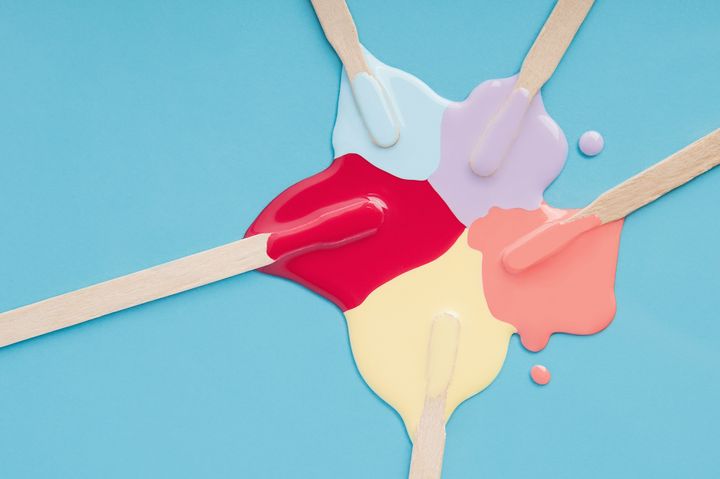
What is your favourite colour? Mine is lilac. Most people’s favourite colour is some variation of blue and we care so much about colour that there’s been a recent trend of influencers getting “colour analysis” consultations to learn whether the colours they tend to wear actually suit their complexions and hair shades.
The wild thing is, though, that while we have what we think are very concrete ideas of our favourite colours and which ones we gravitate towards when clothes shopping, we actually experience colours differently from one another meaning that the colour you’re describing (like your favourite blue shirt) is not quite the same colour that the person you’re talking to is seeing.
Or, another example is, have you ever found yourself arguing with the opposite sex over a colour? Maybe you saw something that looked more red than orange and they argued that, no, it’s definitely orange? This is because as well as individuals perceiving colours differently, perception of colours greatly differs between the sexes, too.
Why Do We Experience Colours Differently?
The back of your eyes are lined with retinas and this is where photoreceptors are located. So, as biologists CJ Kazilek & Kim Cooper of Arizona State University say, “If you think of the eye as a camera, the retina would be the film. The retina also contains the nerves that tell the brain what the photoreceptors are “seeing.”
There are two types of photoreceptors involved in sight: rods and cones. Rodd work at low levels of light and they’re used for night vision as only a few bits of light can activate a rod. They don’t help with colour vision which is the reason everything is in a greyscale at night. Cones, however, require light and are used to see colour. We have blue, green, and red cones.
However, much like lots of elements of human beings: the number of cones in the human retina isn’t constant. Some people have a lot more than others and in fact, there is research that suggests women could potentially see a lot more colours than men.
According to researchers, we could actually be seeing dramatically different colours. Vision scientist Joseph Carroll of the Medical College of Wisconsin said, “one person’s red might be another person’s blue and vice versa. You might really see blood as the colour someone else calls blue, and the sky as somebody else’s red but our individual perceptions don’t affect the way the colour of blood, or that of the sky, makes us feel.”
Another consideration is that colour can differ between languages and lexicons. Grue languages don’t discriminate blue from green but only have one colour term that covers all blue/green shades in the colour spectrum. These include Vietnamese, Kuku-Yalanji, Tswana, and Zulu.
Blue Strawberries?
This week, news emerged of a man in his 40s that had a very rare condition called colour agnosia. It was reported that, “He could put very similar hues in the right order. But he could not sort tokens into distinct colours such as red, green, blue, yellow, and orange. He could not identify the colours of the tokens. He could not imagine the colour of his car. He could not even understand, when presented with a drawing of garishly blue strawberries, that the picture was odd at all.”
This isn’t colour blindness. It’s something entirely different. Researchers say: “In pure colour agnosia, patients have difficulty naming or pointing to named colours, despite relatively preserved colour perception (i.e., retaining the ability to match colours or to identify the numbers on the Ishihara plates). They also have difficulty matching colours, either verbally or visually, to familiar coloured objects (e.g., identifying the colour normally associated with cherries, lettuce, or bananas).”
I don’t know about you but I’m not going to stop thinking about this for a while.